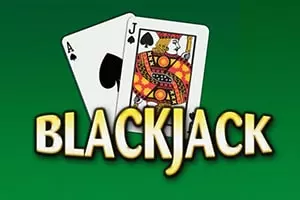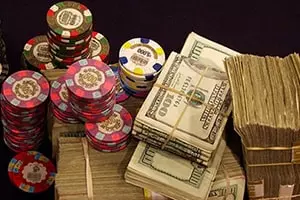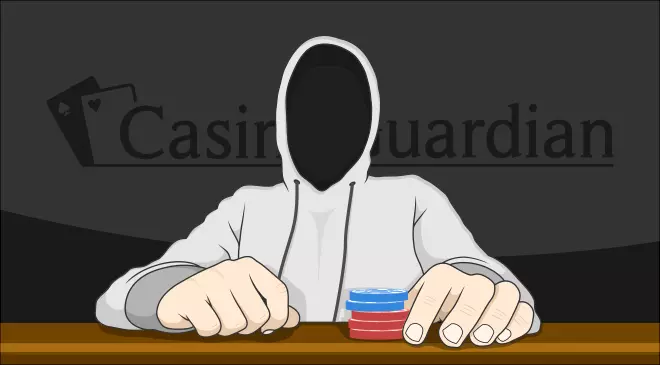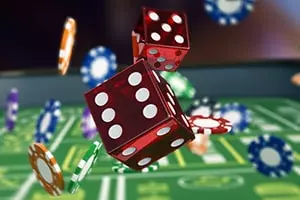 The casino floor offers many betting opportunities but not all gambling games are created equal. Payout percentages vary vastly across different games, and even across different bet types within the same game. Understanding of phenomena like theoretical return and the house edge is crucial to every gambler’s success.
The casino floor offers many betting opportunities but not all gambling games are created equal. Payout percentages vary vastly across different games, and even across different bet types within the same game. Understanding of phenomena like theoretical return and the house edge is crucial to every gambler’s success.
Armed with this knowledge, savvy players can maximize their winning chances, and more importantly, cut down their long-term losses to the bare minimum. All casino games favour the house but the real question is to what extent? Casino Guardian offers readers a refresher on how house advantage works, along with a list of games where they can find the lowest house edges.
The House Edge, or Why the House Always Wins?
If there is anything certain on the casino floor, it is that the house inevitably wins in the end. Like all other commercial enterprises, gambling operators implement a business model that aims to secure their profitability over the long haul. The casino stands better long-term chances of winning than players because all games it offers have a built-in advantage that favours the house.
Said advantage is known as the house edge and reflects the overall profits the casino expects to generate over the long run from each game it operates. Another way to define the house edge is by saying it represents the ratio of players’ average losses to their original wagers. Let’s use the chance game of roulette as an example where the highest payout is 35 to 1 for a winning straight bet on an individual number.
The game’s European version uses a wheel with 37 pockets as it features a single zero along with numbers 1 through 36. The true odds of losing with a straight bet are 36 to 1, not 35 to 1 like the casino pays you. Players can determine the house edge for a given bet by subtracting the payout from the odds of losing and multiplying the result by the probability of winning.
In the case of single-zero roulette, the house edge is equal to (36/1 – 35/1) * 1/37 = 1 * 1/37 = 0.0270, which corresponds to 2.70% when converted to a percentage. It follows that the house retains 2.70% of all money wagered at single-zero roulette tables. The house edge on double-zero wheels with 38 pockets in total is even higher at (37/1 – 35/1) * 1/38 = 2 * 1/38 = 0.0526 (5.26%).
The casino can reasonably expect to generate an average of $27,000 in profits out of every $1,000,000 players bet at its single-zero roulette tables (and $52,600 from double-zero games). The remaining $973,000 represents the so-called theoretical return to player (RTP), which corresponds to 97.30% in single-zero roulette.
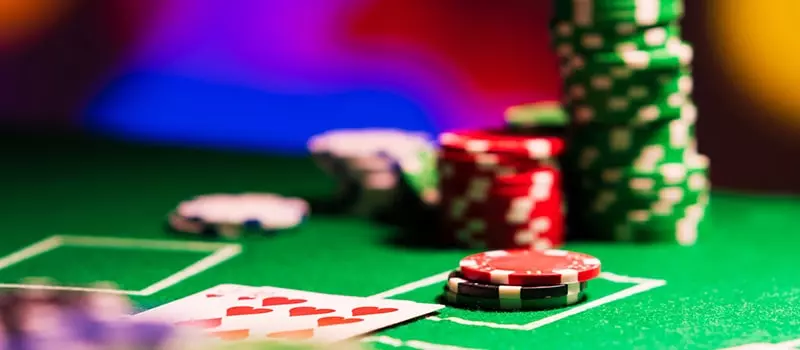
Player Fallacies about the House Edge
Some gamblers are aware there is a house edge but fail to fully comprehend the real implications it has for their bankrolls. They assume the 2.70% house edge in roulette means they would join the table with say $100, play for several hours, and end up losing exactly $2.70. It is crucial to understand the casino’s built-in mathematical advantage manifests itself over the long term. If all players bankrupt their bankrolls in a single sitting, no one would be interested in playing casino games, right?
Another misconception about the house edge is that it applies to a player’s starting bankroll, but this is not the case, and here is why. Let’s suppose a person wagers $10 per spin on a single-zero wheel which produces approximately fifty spins each hour. The person would lose some rounds and win others. Either way, they are betting $500 every hour they spend at the table.
Provided that the house advantage manifests itself perfectly, the player’s expected value would be – 0.027 * 10.00 * 200 = – $54 after four hours of play. As you can see, this amount is considerably greater than what the player expected as a result of misunderstanding the casino advantage.
The more bets you make, the closer you arrive at your expected value, which is negative in the presence of the house edge. A player can end a betting session ahead over the short term but the house edge will inevitably grind down their bankroll over the long run.
There are no windows, clocks, or anything else there that would indicate the passage of time. Many first-timers at the casino floor are thrilled by the free beverages casino managers offer them but this is just another way to get them to stay longer. Where it comes to gambling, getting inebriated does more damage than good.
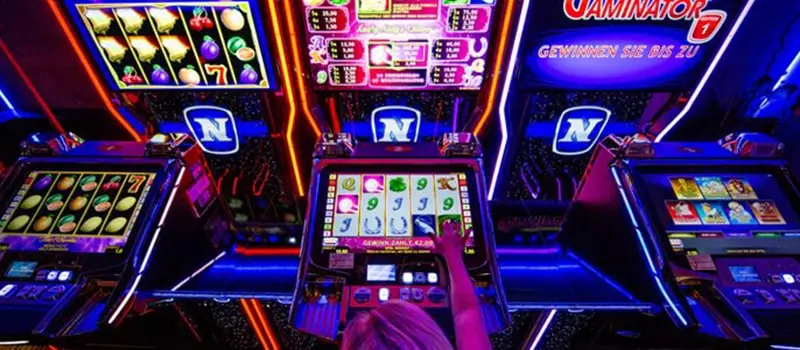
House Edge vs. House Hold
Many players fail to make a distinction between the terms “house edge” and “house hold”, but there is a difference. As we previously explained, the casino’s built-in mathematical advantage represents the amount the house collects from each game in the long term. The term “hold” designates how many chips the house retains out of the total number of chips sold at a given table.
The casino usually measures its hold on a per-shift basis. Here is an example of how it works. A total of $10,000 goes into a single-zero roulette table’s dropbox. Out of this amount in sold chips, the table retains $4,000, while the players pocket the remaining $6,000 as winnings.
The roulette table’s hold is 40% in this case, whereas the house edge stands at 2.70%. If all players who join the game during this shift lose all their chips, the table’s hold will reach 100%. What is more interesting, the hold can even go over 100%, which usually happens when patrons join a game with chips they have bought at another table.

Which Casino Games Give the House the Smallest Advantage?
It becomes apparent the house edge is the most important thing a gambler must consider when choosing a casino game. It determines how fast your bankroll will go and what amount of money you will lose over the long haul. The higher the house edge, the more long-term losses you will incur.
With that said, the casino advantage fluctuates across different bet types in games like craps. In others, it remains constant no matter what bets you make, as is the case with roulette. If you seek to preserve your bankroll for longer, we suggest you play the games below as they come with the lowest house edges.
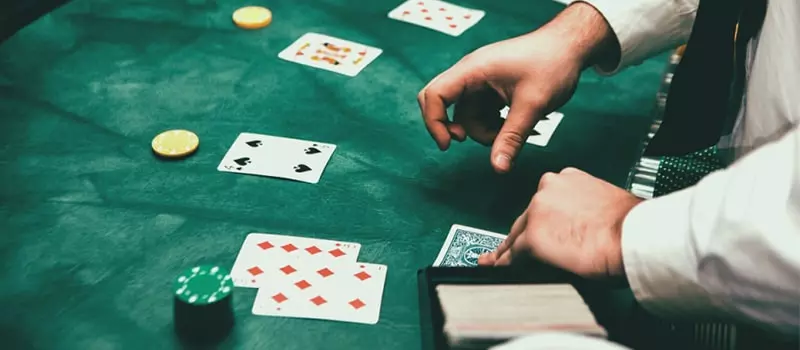
Craps – No House Edge on Odds Bets
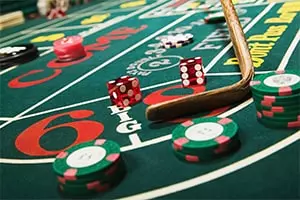 Craps is a game of chance that plays with two dice and requires you to predict the outcome of the toss. Each dice toss is independent of the rest, which renders it impossible for the player to strategically predict the outcome of the next roll. The only strategy involved here is deciding what types of bets to play, and believe us, there is no shortage of betting options in craps.
Craps is a game of chance that plays with two dice and requires you to predict the outcome of the toss. Each dice toss is independent of the rest, which renders it impossible for the player to strategically predict the outcome of the next roll. The only strategy involved here is deciding what types of bets to play, and believe us, there is no shortage of betting options in craps.
You will find the lowest house edges when betting on the pass line. Pass and Come bets pay even money and yield a house advantage of 1.41%, whereas the Don’t Pass and Don’t Come wagers have a house edge of 1.36%. Interestingly enough, craps also offers one of the worst bets you can find on the casino floor in the face of the Any Seven wager, which carries a 16.67% casino advantage. Avoid this bet at all costs!
With that said, the game also features statistically fair wagers that carry no house edges whatsoever and pay at true odds. Commonly referred to as Buy Odds bets, these are made after a point has been established and pay whenever the point number shows before a seven.
Most establishments implement the so-called 3x-4x-5x odds, which means you can wager three times your pass line bet at free odds after point numbers 4 and 10, four times after 5 and 9, and five times when the point is either 6 or 8.
Laying the odds is another possibility for players looking for zero house edges. This is the opposite of buying the odds since you bet that the shooter will seven out before the point number hits.
Respectively, you can lay the odds after a Don’t Pass wager. The payouts are in reverse because you are betting “against the point”. The wager pays 1 to 2 against points 4 and 10, 2 to 3 against points 5 and 9, and 5 to 6 against points 6 and 8.
Odds bets come with zero house edges but there is a catch. The player must have first placed a Pass or Don’t Pass bet before they can take or lay any odds. The casino advantage on the combined wagers depends on the amount the player bets on the odds, hence the restrictions we previously wrote about.
The house has a combined advantage of 0.34% for Don’t Pass Odds and 0.47% for Pass Line Odds at 3x odds. The rule of thumb is the higher the amount players bet on the odds, the lower the casino advantage. Thus, a craps table with 100x odds will have almost a non-existent house advantage of 0.02%.
Blackjack – 0.50% House Edge or Less
 Blackjack is unlike any other game on the casino floor because it comes with a full-proof strategy that unfailingly reduces the house edge if used correctly. Another peculiarity of blackjack is that the casino advantage here is a cumulative result of all the rules at a given table. Some rules benefit the player, bringing down the house edge, while others favour the casino, increasing its advantage.
Blackjack is unlike any other game on the casino floor because it comes with a full-proof strategy that unfailingly reduces the house edge if used correctly. Another peculiarity of blackjack is that the casino advantage here is a cumulative result of all the rules at a given table. Some rules benefit the player, bringing down the house edge, while others favour the casino, increasing its advantage.
Smart online players always check the ruleset of their chosen blackjack variations before they start playing for real money. Below is an example of a player-friendly blackjack game. The ruleset coincides with that of Microgaming’s Atlantic City Blackjack.
- Six decks in play
- The dealer stands on soft 17
- The dealer peeks for blackjacks when showing aces or tens
- Late surrender is available
- Players can double down on any starting total
- Players can double down after a split
- Blackjacks pay at odds of 3 to 2
The estimated house edge for these rules is only 0.36% provided that perfect basic strategy is in play. We suggest you use one of the strategy engines available online to generate a strategy chart that corresponds to this ruleset. The correct plays for some hands differ from one variation to the next based on rules.
Under no circumstances should a basic strategy player insure their hands against a potential dealer blackjack. The name of this wager is a misnomer – Insurance carries a massive house edge (nearly 7.40% in six-deck blackjack) and does not help the player in any way. Last but not least, we warn you to avoid posting side wagers like Perfect Pairs or Lucky Ladies since their house edges are also monstrous.
Full-Pay Jacks or Better Video Poker- 0.44% House Edge
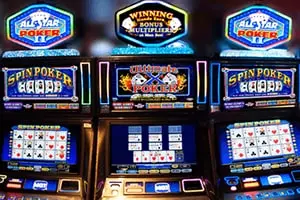 Video poker debuted on casino floors back in the 1970s and has become one of the most popular gambling games since then. It is the perfect choice for gamblers looking for a game with an element of skill and low house advantage. On top of these merits, video poker has the potential to yield massive wins and is very simple to play.
Video poker debuted on casino floors back in the 1970s and has become one of the most popular gambling games since then. It is the perfect choice for gamblers looking for a game with an element of skill and low house advantage. On top of these merits, video poker has the potential to yield massive wins and is very simple to play.
Players bet one to five coins per hand and receive five cards. Then they must decide which cards to keep and which ones to discard. The software replaces the discards and pays out depending on the hand’s strength. Many video poker variations are available online, with Jack or Better offering one of the lowest house edges.
The exact house edge varies depending on the game’s paytable. Some variants with very liberal paytables can even give the player a thin edge when played with the correct strategy. Even variations that slightly favour the casino can yield a theoretical return over 100% when we factor in promotional incentives like comp points and cashbacks.
NetEnt’s Jacks or Better Double-Up is one of the online video poker variants with the lowest house edges. The exact theoretical return depends on your bet level, though. It reaches 98.40% on bet levels one through four, for a house edge of 1.60%. The house edge drops to 0.44% at the highest level where you play five coins per hand. Of course, these percentages apply when one plays the game optimally, using the correct strategy.
NetEnt’s Jacks or Better is a full-pay variation meaning that it pays nine times the bet for a full house and six times the bet for a flush. Another piece of advice we can give you is to always play at the highest bet level with five coins per hand. All video poker games we know of offer bonus payouts for royal flushes with maximum coins.
Some online video poker variants have a double-up feature smart players can take advantage of. It activates after a winning hand, prompting you to play a side guessing game for the chance to double your winnings. Next to laying or buying odds in craps, the double-up is the only other fair bet on the casino floor that carries no house edge.
Whether you accept or decline it largely depends on your volatility tolerance and reason for playing as well as on your chosen video poker variation. Experts recommend you take advantage of the double-up feature moderately when playing games with negative expected value for recreational purposes. Conversely, you should skip on the feature when playing video poker games with positive expectation.
Baccarat – 1.06% House Edge
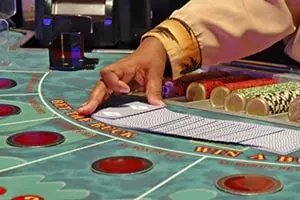 Despite its somewhat confusing tableau of card drawing rules, baccarat is one of the simplest games you can find on the entire casino floor. Hugely popular among Asian players, baccarat is among the world’s oldest casino games. The dealer does the card drawing – all that is left for you to do is decide whether to bet on Player, Banker, or Tie.
Despite its somewhat confusing tableau of card drawing rules, baccarat is one of the simplest games you can find on the entire casino floor. Hugely popular among Asian players, baccarat is among the world’s oldest casino games. The dealer does the card drawing – all that is left for you to do is decide whether to bet on Player, Banker, or Tie.
One thing to keep in mind is that Banker does not represent the dealer’s hand. Player and Banker are merely two separate outcomes you can choose from, much like heads and tails in a coin-flip game. Both outcomes offer rather decent odds to players. Player yields an even-money payout for a house edge of 1.24%.
Since Banker has a slightly higher win frequency than Player, most casinos deduct a 5% commission from the even-money payouts on winning Banker bets. Nonetheless, you can find no-commission baccarat variations in online live dealer casinos that use software from Evolution Gaming.
However, we recommend you refrain from placing this bet due to its massive house edge. In eight-deck games where winning Tie wagers pay at odds of 8 to 1, the house holds a 14.4% advantage. A higher payout of 9 to 1 reduces the casino edge to a more tolerable 4.85%.
French Roulette – 1.35% House Edge
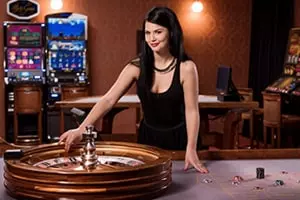 Roulette is similar to craps because it is a game of independent trials, meaning that the outcome of the next spin has no relation whatsoever to the numbers that have been previously spun. The odds reset after each wheel spin. In other words, the player cannot predict the result of a spin based on the numbers that have already come up.
Roulette is similar to craps because it is a game of independent trials, meaning that the outcome of the next spin has no relation whatsoever to the numbers that have been previously spun. The odds reset after each wheel spin. In other words, the player cannot predict the result of a spin based on the numbers that have already come up.
It follows roulette is insusceptible to strategic or system play, although some clueless “experts” will tell you otherwise. The best thing you can do is choose your roulette games wisely and go for single-zero variations that offer the La Partage or En Prison rule. The presence of these “French” rules causes the house edge in single-zero roulette to drop from the tolerable 2.70% to the even better 1.35%. The two rules are normally available at roulette tables across France, hence the name “French rules”.
They apply to even-money wagers like black/red, odd/even, and high/low, all of which are instant losers whenever the ball lands on the green zero. With La Partage, players receive half their original wagers back when zero hits and lose the other half. When En Prison applies, the losing even-money wager remains on the layout for the next spin. If it wins the second time around, the player gets it back in full but without collecting any winnings.
